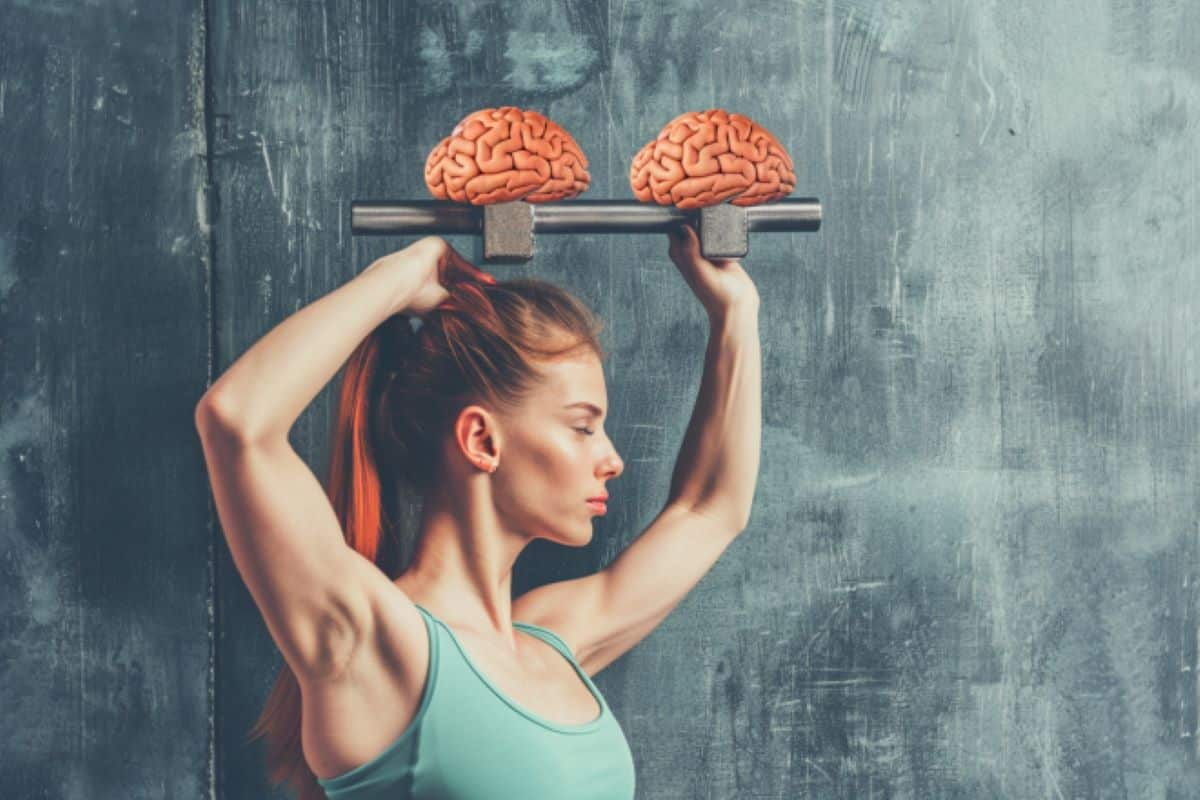What this simply means is your doctor has to get you 100% recovered physically to get your cognition back 100% also. Can your doctor do that?
Exercise Enhances Brain Function Through Muscle-Nerve Interaction
Summary: Researchers uncovered a critical link between exercise, muscle function, and brain health. Their study reveals that nerves activating muscles during exercise also trigger the release of molecules that enhance brain function.
By stimulating these nerves with glutamate, they found that innervated muscles produced more brain-boosting hormones and extracellular vesicles. This research underscores the importance of maintaining neuromuscular health, particularly as we age, to support overall brain and organ function.
Key Facts:
- Neuron Influence on Muscle Secretions: Muscles innervated by neurons produce more substances that promote brain health compared to non-innervated muscles.
- Impact of Glutamate on Muscle Activation: Glutamate stimulation increases the secretion of beneficial hormones like irisin and enhances the release of extracellular vesicles containing microRNAs that support neurodevelopment.
- Implications for Aging and Neuromuscular Health: The study highlights the critical role of neuron-muscle interactions in maintaining cognitive function, especially relevant for aging populations and those with neuromuscular disorders.
Source: University of Illinois
Exercise prompts muscles to release molecular cargo that boosts brain cell function and connection, but the process is not well understood. New research from the University of Illinois Urbana-Champaign has found that the nerves that tell muscles to move also prompt them to release more of the brain-boosting factors.
“The molecules released from the muscle go into the bloodstream and then to the brain, producing so-called crosstalk between the muscle and brain. But the muscle itself is highly innervated.
“So we wondered, what is the effect of the neurons on this activity of the muscle, and further down to the communication between muscle and brain?” said chemical and biomolecular engineering professor Hyunjoon Kong, leader of the study published in the Proceedings of the National Academy of Sciences.

“As we get older, we lose these neurons from the muscle. And some people also lose these neurons to disease or injury. So understanding their role, and how these nerves to the muscle affect the brain, is important for older people or patients with neuromuscular injuries and diseases,” he said.
Research on exercise has found that muscles secrete hormones and extracellular vesicles, tiny packages that carry molecules between cells, containing small fragments of RNA that enhance connection, signal transmission and communication between brain cells.
However, while much attention has been paid to the function of muscle-derived factors, the role of the nerves that stimulate the muscle is poorly understood, said graduate student Kai-Yu Huang, the first author of the study.
To fill this gap, the researchers compared two muscle tissue models—one with neuron innervation and one without. They found that the innervated muscle produced more molecules that promote brain neuron activity and regulate muscle development than the muscle without nerves.
Then, the researchers stimulated the nerves with glutamate, a neurotransmitter. They found that the innervated muscle had greater expression of a gene important for regulating secretion.
Correspondingly, it emitted higher levels of the hormone irisin, which is associated with beneficial effects of exercise, and released more extracellular vesicles than plain muscle.
“We analyzed the cargo carried in the vesicles, and we found that there was a greater diversity of microRNA associated with impact on neurodevelopment,” said Huang.
“These findings highlight the importance of neuron innervation. As we get older, we lose nerve supply to muscle, and our muscles start to break down and lose function. And somehow, this can further result in organ dysfunction. So understanding how to regulate or maintain muscle’s secreting behavior is very important.”
Next, the researchers plan to look further into mechanisms at the junction where the neurons meet the muscle cells to determine how nerve impulses are stimulating the muscle and whether they affect the production of the brain-boosting factors or just their release, an important distinction for possible treatments for those who have lost nerves or muscle.
They also hope to explore using their tissue model as a platform for effectively producing the factors. Ultimately, they hope to have a complete picture of the brain-nerve-muscle loop and how to maintain it.
“It’s our individual organs talking to each other: The brain tells the nerves to stimulate the muscle, and the muscle releases back molecules beneficial for brain function,” Kong said.
“It underscores the importance of exercise. Exercise creates a more robust interface between motor neurons and muscle, and now we know the nerves sending the signal into the muscle releases the molecules and extracellular vesicles that are beneficial to the brain.
“So we could look at the benefits of exercise focused on fostering that connection more than simply increasing the volume or strength of the muscle.”
About this exercise and neuroscience research news
Author: Liz Ahlberg Touchstone
Source: University of Illinois
Contact: Liz Ahlberg Touchstone – University of Illinois
Image: The image is credited to Neuroscience News
Original Research: Closed access.
“Neuronal innervation regulates the secretion of neurotrophic myokines and exosomes from skeletal muscle” by Kai-Yu Huang et al. PNAS
No comments:
Post a Comment